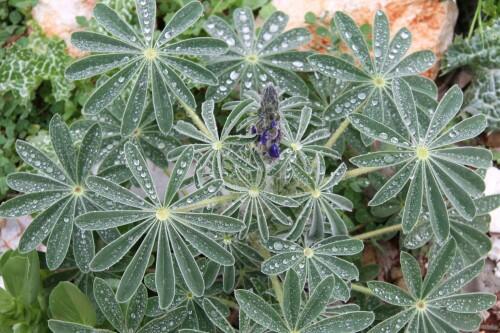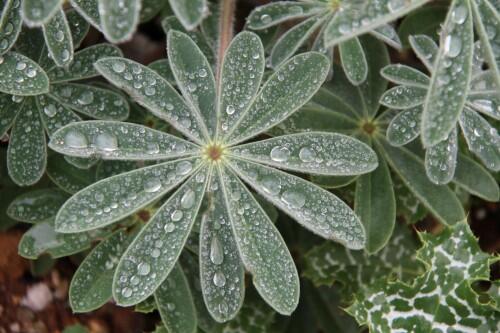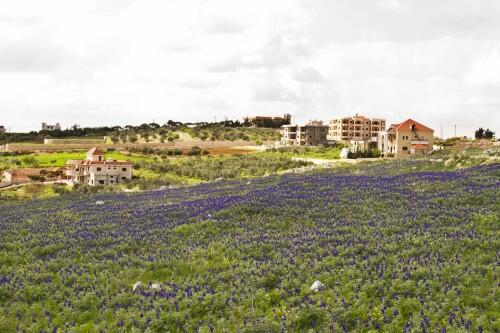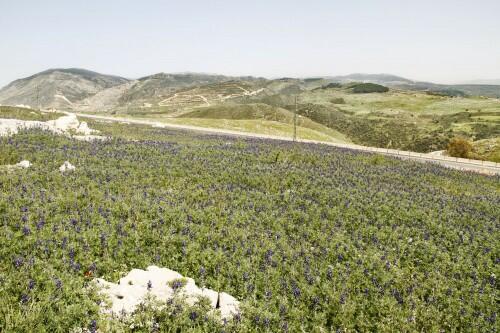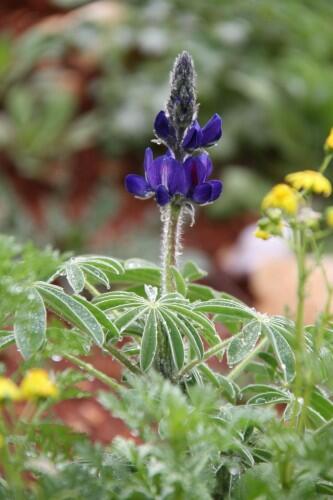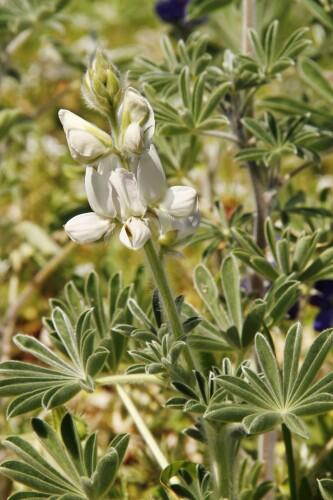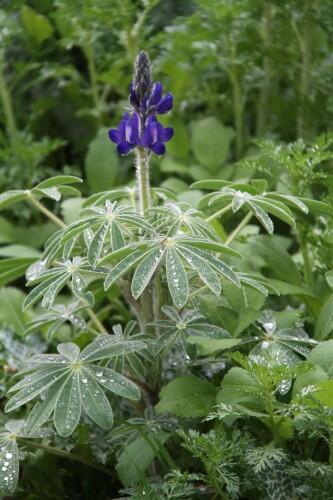The wild lupine «Lupinus» began spreading its “Chinese” carpets on the hills, slopes, fallow land, and some plains between Nabatiyeh and Marjayoun in southern Lebanon. The month of February is considered the blooming season of the “violet” flowers, which bloom successively in the form of a pyramid, to begin growing between March, April, and May.
Apart from the beautiful violet carpets, which are charming eyes, especially when they are widespread in the spring season, the wild lupine forms pastures for cows and cattle after the farmers started neglecting it, although it multiplies frequently “in the wilderness”, from the grains which are left in the fields from year to year, which confirms that lupine reproduces itself away from the farmers sowing and the cost of planting it. This is probably due to the significant drop in different agriculture in the south.
Planting lupine, which constitutes an important food on more than one level, did not receive interest among southern farmers, who found that it was enough to buy “ready” imported grains, which they would soak in the ponds, streams, and springs for several days to sweeten them, until they become ready to decorate tables or for entertaining evenings. Therefore, interest in wild lupine is mostly limited by the shepherds, who find it as a good food for their herds and “free” grazing areas.
Agriculture
Whilst originally cultivated as a green manure or forage, lupins are increasingly grown for their seeds, which can be used as an alternative to soybeans. Sweet (low alkaloid) lupins are highly regarded as a stock feed, particularly for ruminants but also for pigs and poultry and more recently as an ingredient in aqua-feeds.
The market for lupin seeds for human food is currently small, but researchers believe it has great potential. Lupin seeds are considered “superior” to soybeans in certain applications and there is increasing evidence for their potential health benefits. They contain similar protein to soybean but less fat. As a food source, they aregluten-free and high in dietary fiber, amino acids, and antioxidants, and they are considered to be prebiotic. About 85% of the world’s lupin seeds are grown in Western Australia.
Three Mediterranean species of lupin, blue (narrow-leafed) lupin, white lupin, and yellow lupin, are widely cultivated for livestock and poultry feed.
Like other legumes, they can fix nitrogen from the atmosphere into ammonia via a rhizobium–root nodule symbiosis, fertilizing the soil for other plants. This adaption allows lupins to be tolerant of infertile soils and capable of pioneering change in barren and poor-quality soils. The genus Lupinus is nodulated by Bradyrhizobium soil bacteria.



